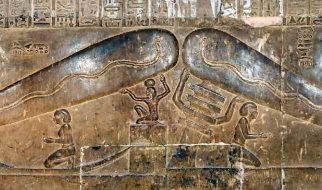If you?re not familiar with the New York City public transport system, count yourself lucky. Even when it?s working, it?s really not intuitive. It took me a while and lot of missed connections to become acquainted. Don?t suffer like I did ? learn from my struggle.
I will place the key information here for your reference, so you can return to this page quickly. Each point is explained in detail below.
Here are your checkpoints to not get lost on the NYC subway:
- Which train do you need? Is it local or express?
- Are you walking to the right subway station?
- Are you walking into the station on the correct side of the street?
- Are you standing on the right platform for your train?
- Are you traveling at the right time and day for your particular route?
- Did you step on the correct train when you arrived? Are you sure?
- Watch and listen for your stop, and any service changes.
Read through the explanations and then return to this list. Then have it tattooed on your heart.
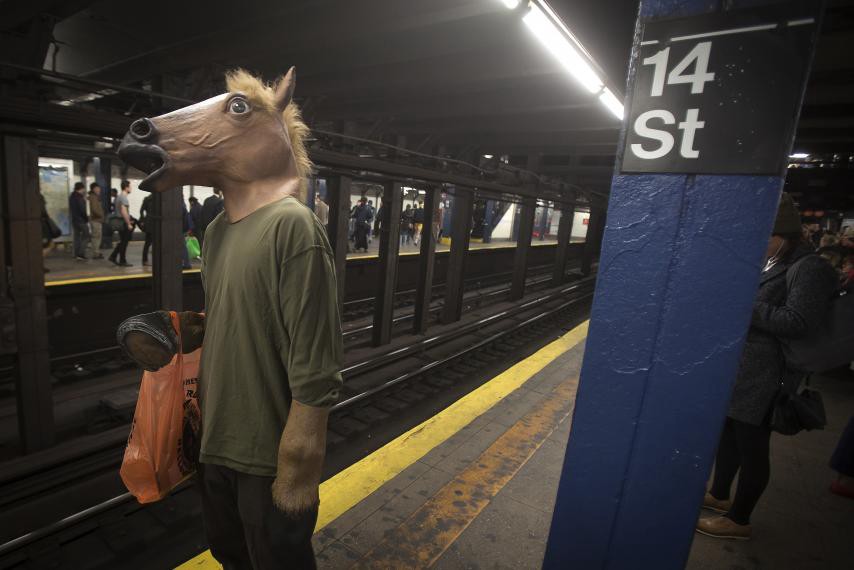 NYC Subway: a very normal place where nothing weird has ever happened (source)
NYC Subway: a very normal place where nothing weird has ever happened (source)
ONE. Which train do you need? Is it local or express?
OK, you?re in New York and you need to get somewhere. It?s time to plan your subway strategy.
Let?s say you?re in Greenwich Village (southwest Manhattan) and you want to head up to Harlem (North of Central Park). You look on a subway map and you see a pretty blue line that goes north, that looks like the A, C, or E line.
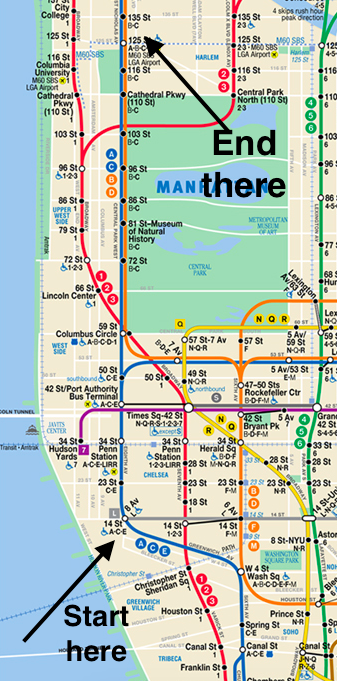
You do want the blue line, but if you follow the map north, you see that the blue line breaks up just south of Central Park ? you can see that the E veers off to the right to go to Queens. That only leaves the A and the C that go all the way uptown. (?Uptown? means north Manhattan, ?downtown? means south Manhattan.)
You could theoretically grab either the A or the C, but some trains like the A run express.
Express means it skips smaller stops to get you there faster, local means it stops at all of them.
Apps like Google Maps or Citymapper can be helpful here. If you?re using Google maps for your route, they will only give you the Express estimate in time. Traveling the full length of Manhattan, this could be a 10 minute difference in arrival time. Which means if you get the local train, you will arrive late if you?re in a time crunch. Rude.
So, check to see if the stop you need is on the local or express line.
Express stations are marked by a white dot on the map. Local stops have a black dot. LOOK! Look at the black and white dots!
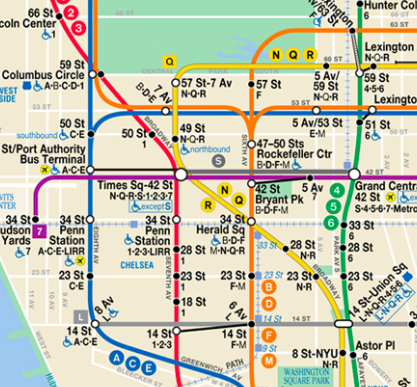
Now, look ever closer. You?ll see that next to every single station dot, the individual trains that stop at each station are also listed. For example, Times Sq-42 St shows that it connects the N,Q,R,S,1,2,3 and the 7. The 50th St station only runs the 1.
And here is the last bit of secret code on the NYC subway map. Now that you see the trains that arrive at each station, do you see that some of the trains are bolded and some are not? The bolded ones mean that they run 7 days a week. The non-bolded ones only run on weekdays. If today is a Saturday, Sunday, or a holiday, then you can only catch bolded trains.
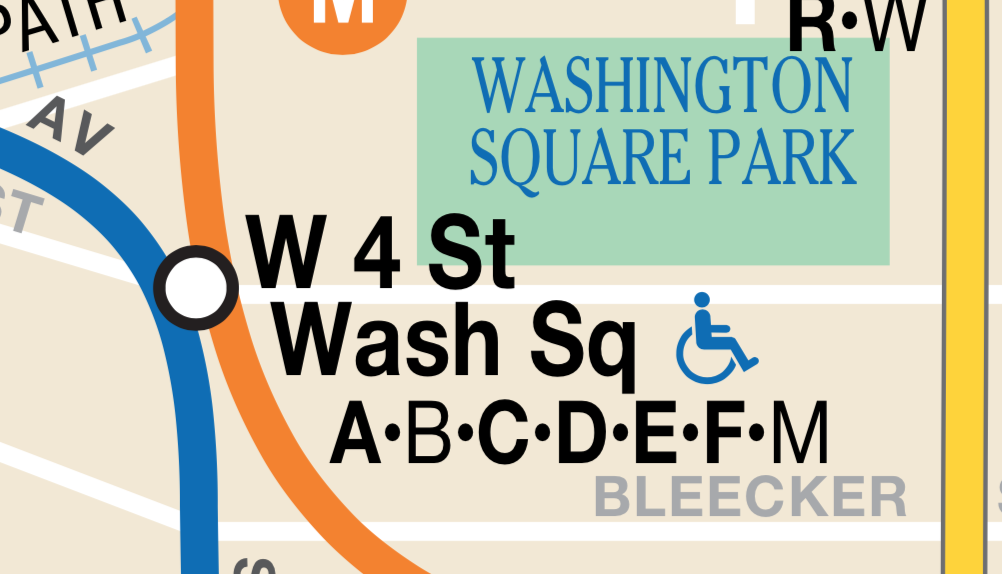 The map is confusing, it?s not your fault
The map is confusing, it?s not your fault
For West 4th Street here, you can see that the B and M trains are unbolded. The others run 7 days.
For this particular example, you probably want to start at 14th Street Station in the Village, taking the A or the C. If you want to go to 125th St station in Harlem, you can take the express A. If you want the 135th St station, you would select the C, since you would be headed to that local stop.
Once you determine which trains (or combination of trains) are best for your journey, you can walk to the station.
TWO. Are you walking to the right subway station?
Because of the bizarre history of the NYC subway system, the names and locations of stations can be confusing. Currently the subway is run by the MTA (Metropolitan Transit Authority), however it was originally developed as a collection of competing subway businesses. This means that many of the subway lines run parallel and do not connect to one other. It also means that many of the lines have their own version of the same stop.
As a result, there are multiple stations with the same name for almost every line. Generally, you will see the parallel stops for all of the different sets of lines: the A-C-E, the N-Q-R, the 1-2-3, the 4-5-6, and the B-D-F-M (No, that?s not a typo, but I know what you?re thinking). For example, there are three different stations with the name ?Canal Street?, and four stations identified as ?125th Street?.
As you can see, some of these parallel stations are very far apart from one another. Here are the four different 125th Street stations.

As you can see, the 125 St station for the 1 train is a good 30 minute walk from the 125 St station for the 456 trains:
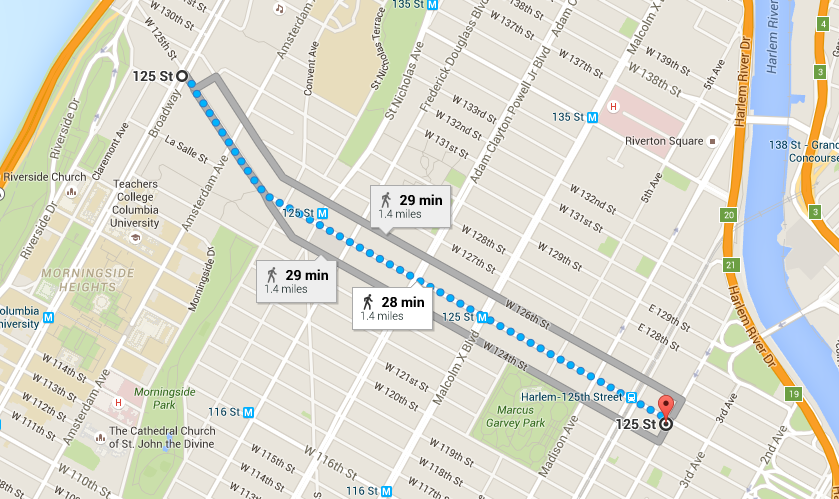
So, you need to know the station you?re looking for and also which line it connects with. Don?t walk aimlessly toward a station that sounds like it?s yours. Look on a map and see the exact intersection you need to go to to get on your train for your line.
(By the way, if you made it to the station then you can buy your Metrocard if you haven?t already. Here is the price breakdown from the MTA to help you determine which ticket is the best price option for your needs.)
THREE. Are you walking into the station on the correct side of the street?
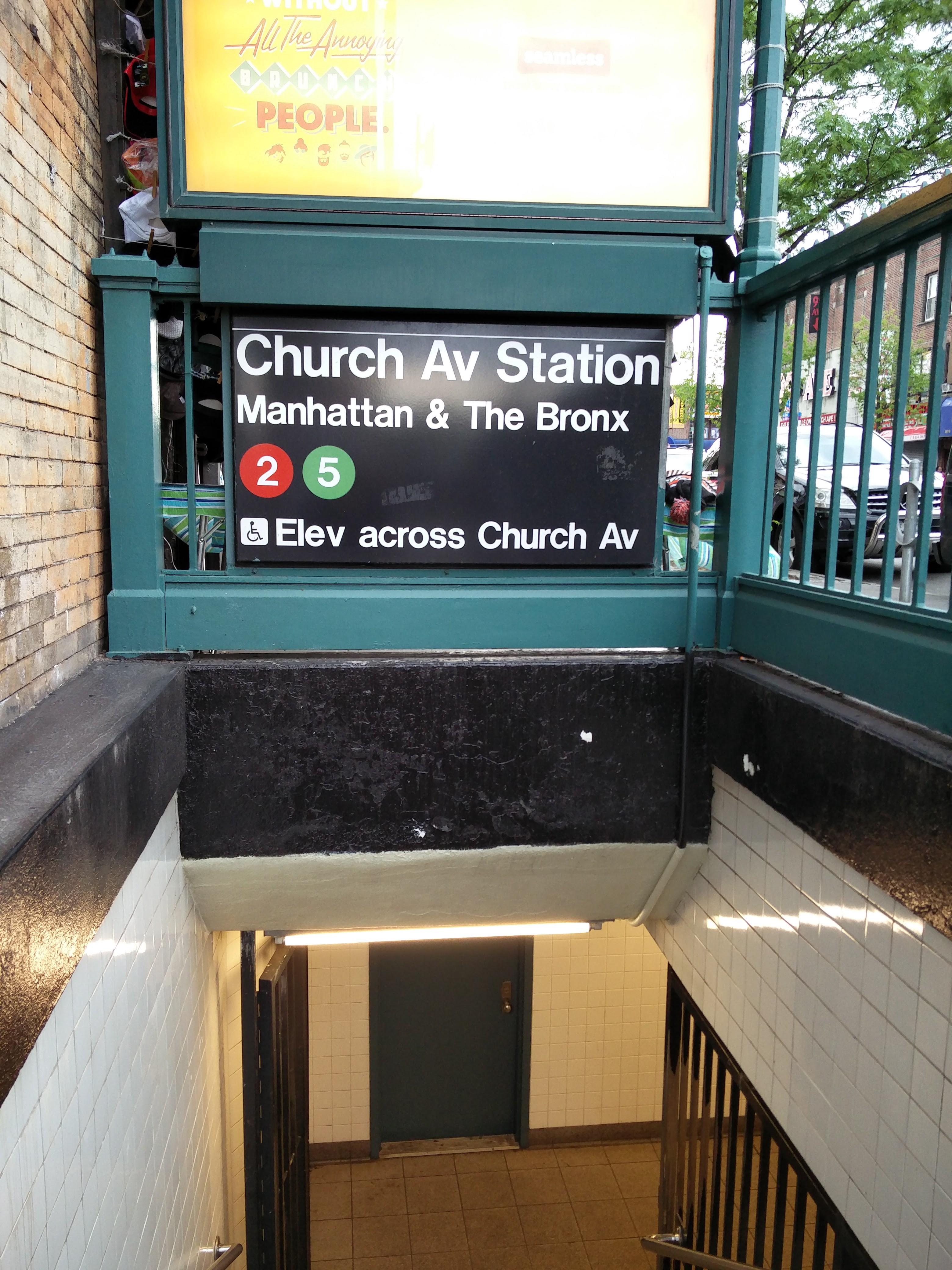
For smaller stations, frequently each entrance to the train only takes you in one direction. Check as you?re walking down the steps. This is easy to miss if you?re not paying attention!
Here is an example of the entrance to Church Avenue station, to the platform that is running north into Manhattan.
The entrance to the platform heading in the other direction is located on the opposite side of the street.
If you enter the station and realize you?re going in the wrong direction, you will need to come back above ground to re-enter on the other side.
If it doesn?t say a direction going down, that means it has entrances for both directions. You can also check above the turnstiles before you pay to make sure.
Here is a picture of the signs above the turnstiles, allowing you to double-check that you?re catching the right train and in the right direction. Note how 123 go in both directions, but the F and M are only going to Brooklyn:
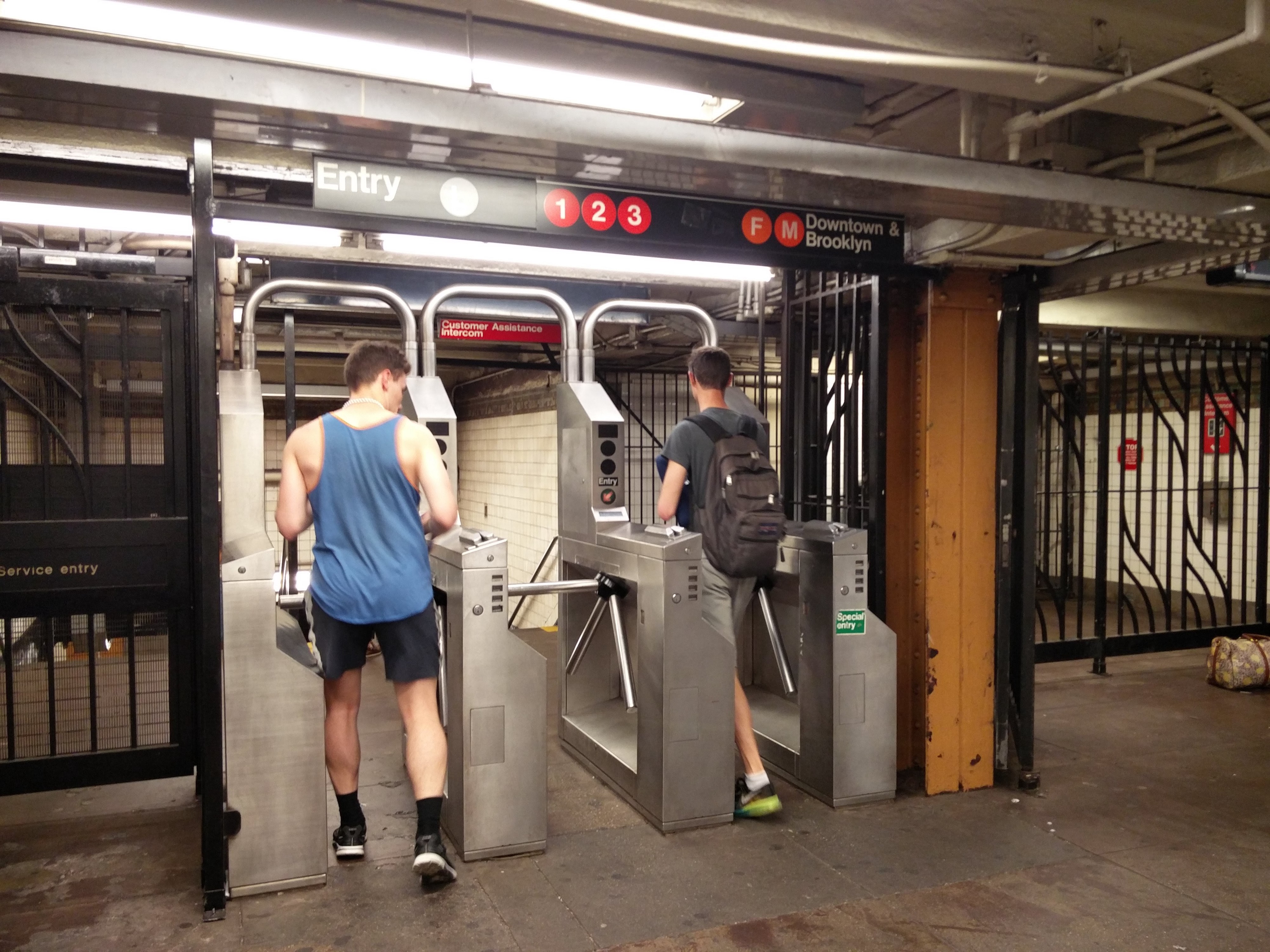
FOUR. Are you standing on the correct platform for your train?
If you?re entering at a larger station, there will be multiple platforms, each for different train lines. Don?t just enter the station and assume the platform you?re standing on is the correct one.
The signage in the subway is generally confusing. Here are the signs at Atlantic-Barclays Center in Brooklyn:
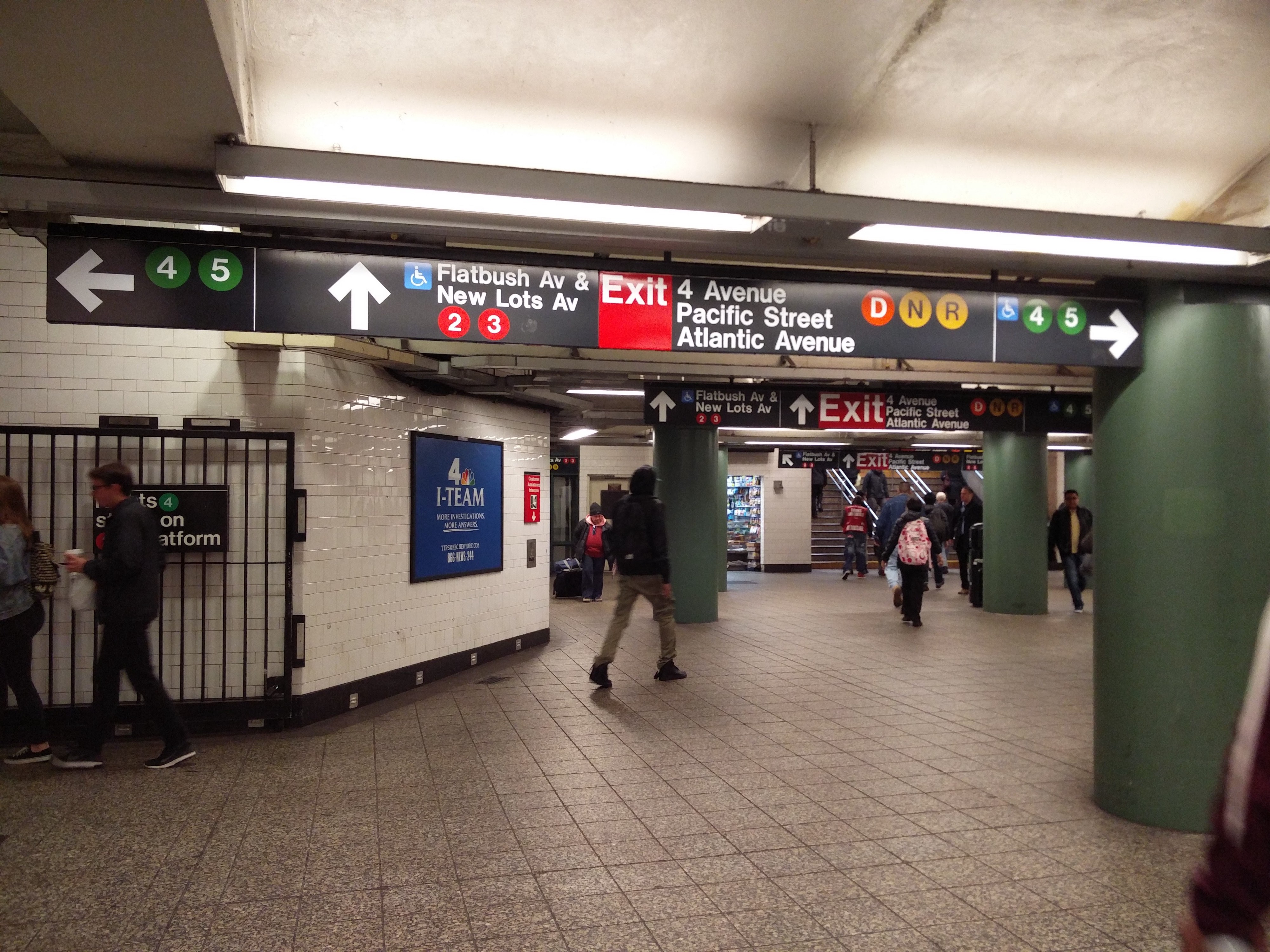 What is going on here? Great point science is still working on it
What is going on here? Great point science is still working on it
If you are as easily confused as I am, sometimes it takes a little trial and error (that is, walking around) to find the entrance for your platform.
Once you arrive at your platform, the best way to check that you are in fact standing in the right place is to look at the sign that is parallel with the train.
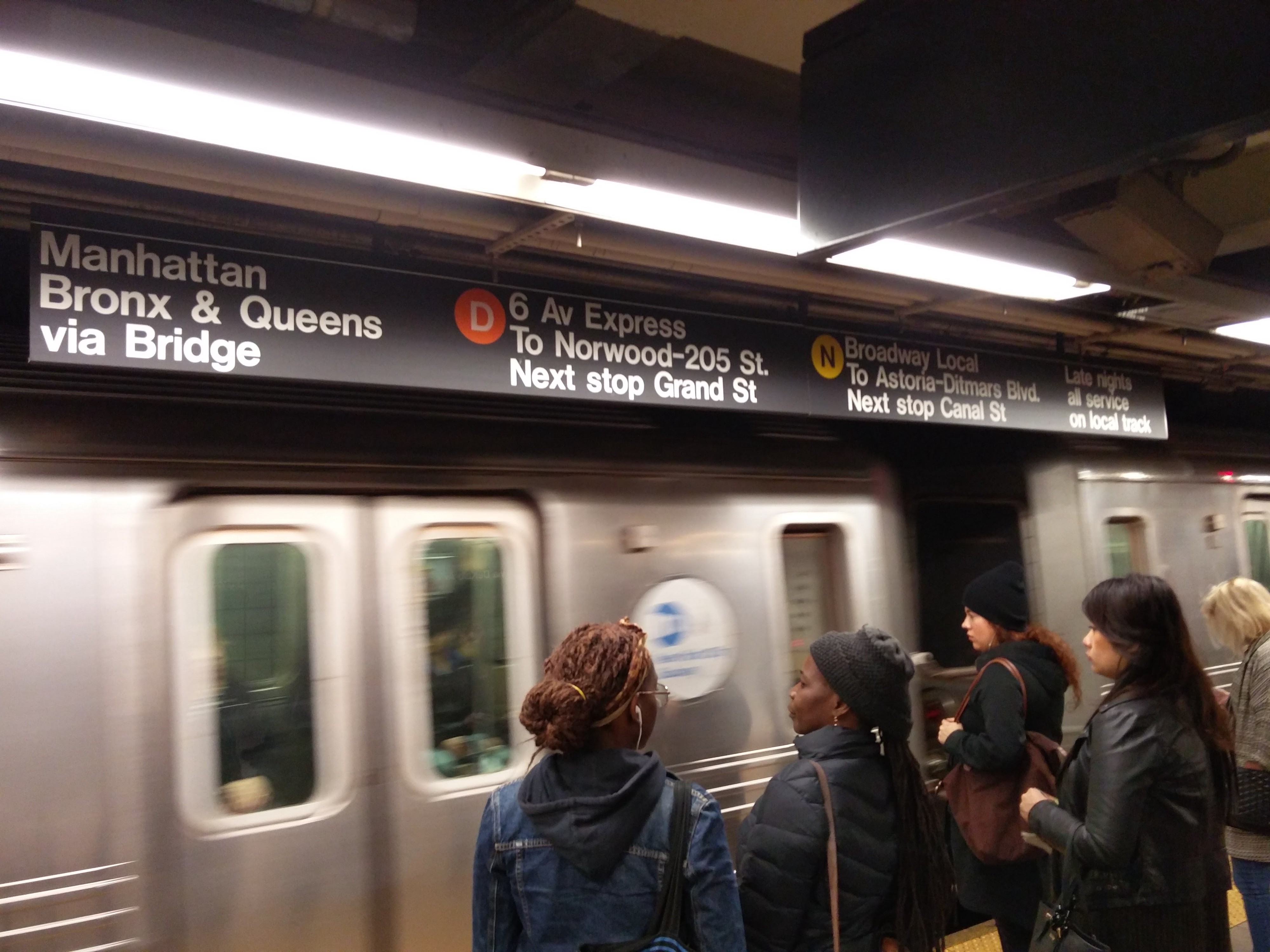
Note that the sign is parallel with the train. There are also signs that are perpendicular to the platform, which are telling you where the exit is.
FIVE. Are you traveling at the right time and day for your particular route?
Beware, some trains only run at certain times. While the NYC subway system runs 24 hours, generally the Express trains stop running around 10:30pm. All the local trains will still keep running. Their routes, however, may change.
This is an example of a train line that changes at night. This is indicating that at night, the 4 train stops on the platform.

Other trains don?t run on weekends at all, like the B. Sorry B! It?s the weekend, time to sleep.
If you are taking a regular route, familiarize yourself with how the schedule changes. Some routes have a rush hour express that go back to local.
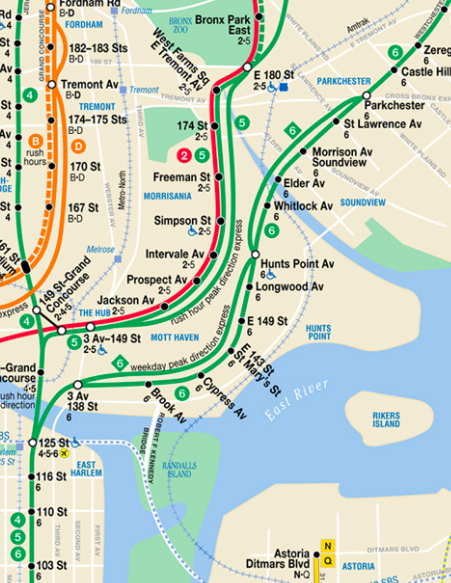
The 5 and 6 trains, for example, have a rush hour express running in the peak direction. You can see the lines that jump over several stops, running parallel to their normal stops.
If you are not sure which trains are running in that moment, ask a local or try to use an app like Google Maps or Citymapper to find an up-to-date route for that time and day.
SIX. Is this your train?
Congratulations! You?ve completed checkpoints one through five, so you should be be set. A train is approaching, so it should be yours. Wait though ? is it?
Just check yourself one more time ? different trains can arrive on the very same platform, so even if you are in the right place, don?t blindly walk onto the next carriage that pulls up.
Be prepared for a small moment of panic when a train approaches. It?s not always clearly marked which train it is. This is what a train looks like when it?s in the station. (What train is this? Great question! I have no idea.)
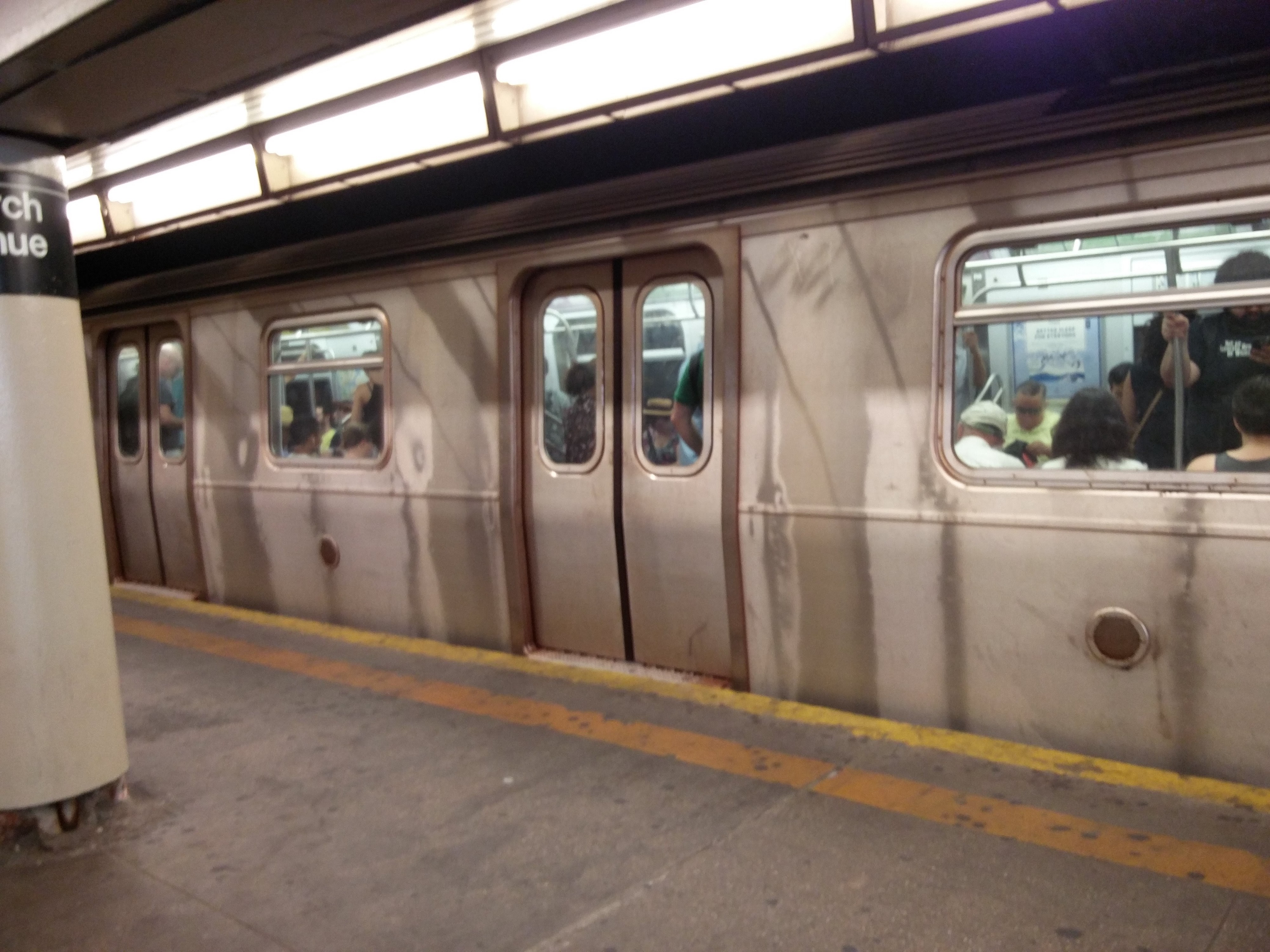 The ?? Train
The ?? Train
But, compare that with what it looks like when it?s rolling into the station:
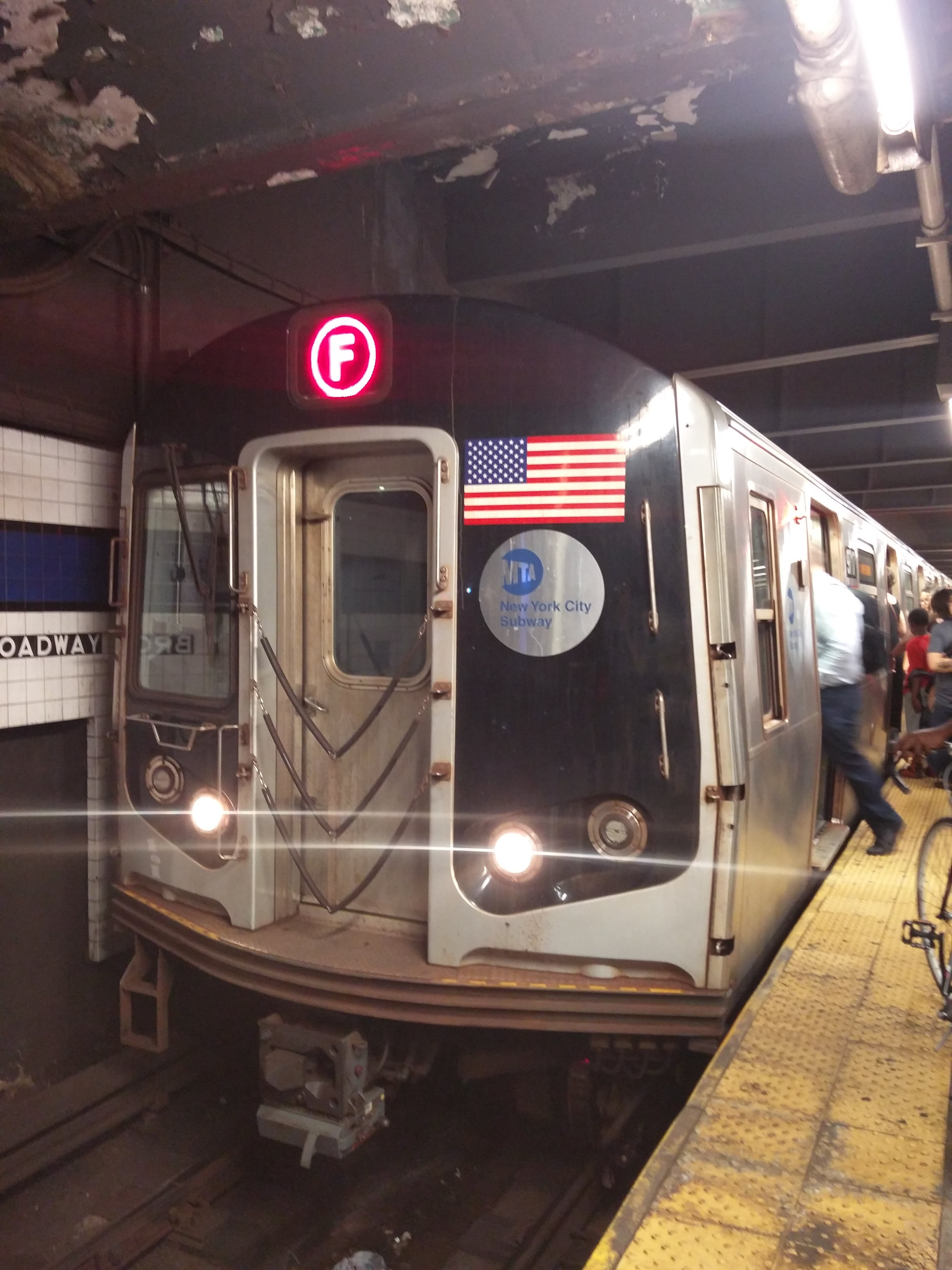
Much better! Check the front of the train as it is approaching, and it is often most clearly signposted there.
Once you are inside the train, there will be some indication in the car to tell you which line you are on. There may be a garbled announcement from the driver, or there will be a poster or digital sign so you know you?re on the right line. However, if you are standing outside of the train trying to figure out if it is yours, it is possible to miss it and you?ll have to wait for the next one. So, it?s best to check it when it?s pulling into the station.
SEVEN. Watch and listen for your stop.
You?re on the right train! You?re moving! You?re almost there! Now for the home stretch: how do you know when you?ve arrived?
Again, arrivals are not always as easy as they seem. Different train lines have varying levels of quality ? you actually don?t know if you?re going to be on a train line with clear directions and announcements. Sometimes, delightfully, there is a crystal clear pre-recording of an angelic guide, ?We are now approaching XYZ station.? Thank you, angelic voice! That is useful information!
However, if you are on one of the less updated lines, you yourself need to be aware of when your stop is approaching, since there will be no sign inside the train. On these lines, it will be the train driver on a speaker so scratchy they may as well be rubbing the microphone on their hair or hanging it out the window. A vague announcing noise comes on, but if you didn?t already know the name of the stop approaching, you?re likely not to understand them.
Sometimes, also, certain stations are out of service. Listen for announcements or any alternative routes you need to take. You might be on the right train and then it just doesn?t stop where you?re going that night. It is for this reason you have to try to listen, and if you didn?t hear them correctly, ask someone next to you if they understood the announcement.
There are also visual indicators of where you are in each station, but they are not always useful either. Once you arrive at your stop, there should be something out the window showing which station you are in. Sometimes this is very clearly written on the subway walls. Sometimes they give you something more akin to a secret clue, like a repeated number on a wall:
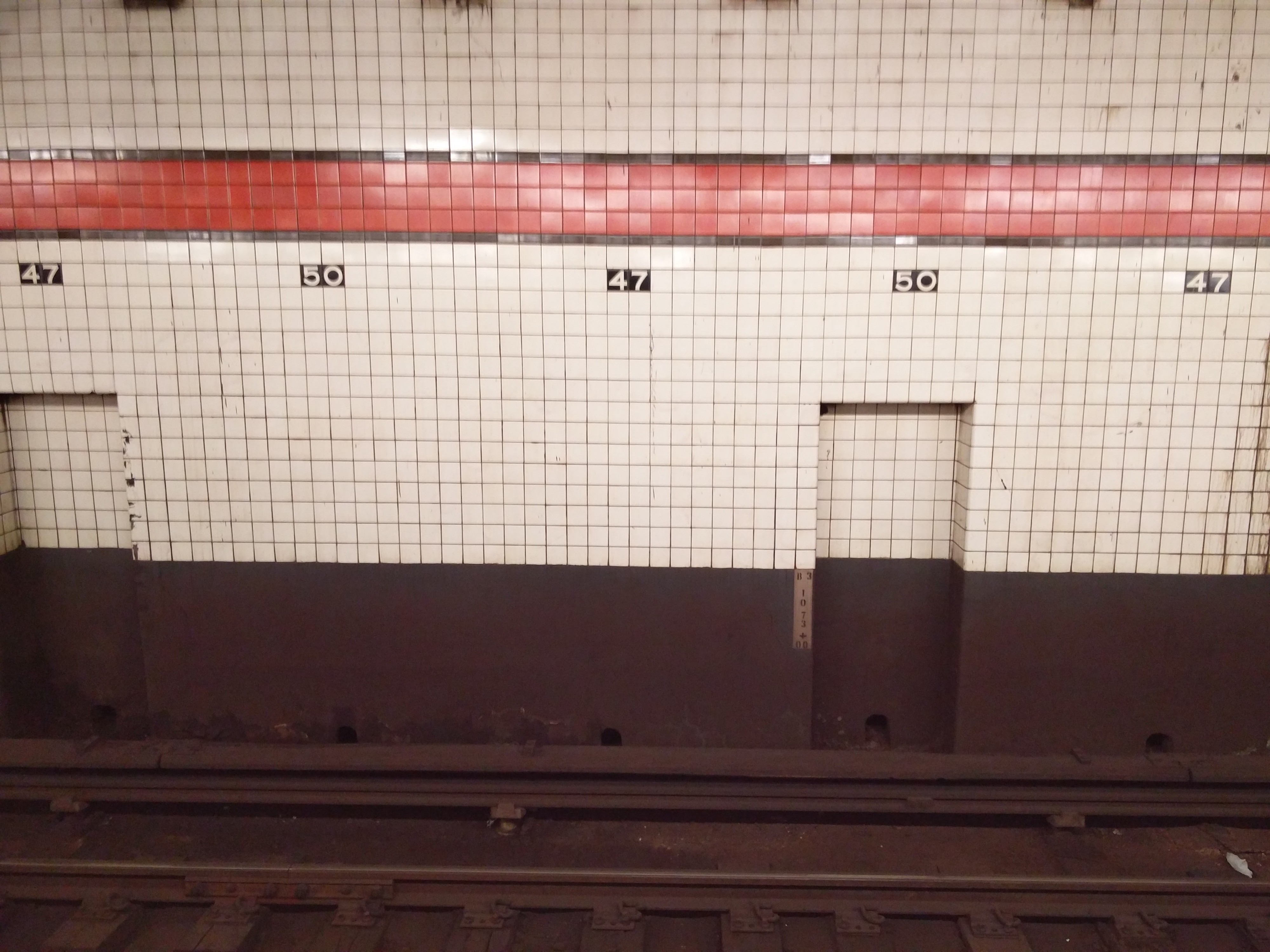
That is the ?clear? indication that you are at the 47th & 50th St station on the BDFM lines. Obvious, right? Most signs are better, but, well? you?ve been warned.
?
OK! That?s it! Once you get off, congratulations! You?ve survived one trip on the New York Subway. You?re a real New Yorker, or something. Yay!
Now, go back to the top of this article and read through the checkpoints again to make sure you?ve got them down. If you learn what I?ve taught you here, you should only be getting lost for about a week or so. It took me two months and a lot of missed connections to figure all this out.
Good luck and Godspeed, everyone!

